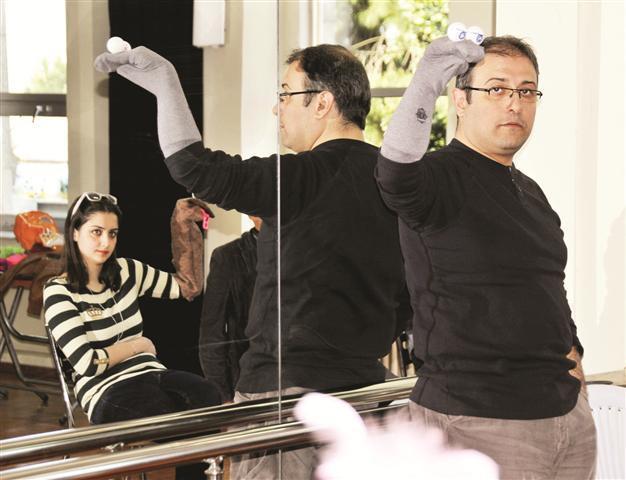Theater festival provides glimpse of puppet world
ANKARA - Anatolia News Agency

Boğaçhan Sözmen says that their goal is to use
the waste instead of getting rid of it. AA Photo
Making use of waste and other junk, organizers at the 14th State Theaters Sabancı Adana
Theater Festival are teaching participants how to make puppets and perform a
puppet show.
A festival committee is giving lessons to participants through workshops that feature instruction from puppeteer and puppet maker Hakan Dündar, Adana State Theater artist Boğaçhan Sözmen recently told Anatolia news agency.
Sözmen, who started to act when he was 10 years old, has been working with puppets for 24 years.
“I think puppets or being a puppeteer is a very important sub branch of theater. It has developed my acting,” said Sözmen, adding that puppetry helped him gain a new point of view about acting.
The atelier work as part of the festival in the southern province is also very important, according to Sözmen.
“For the first time this year we have puppet workshops within the festival,” said Sözmen, noting that the puppets were made from waste or garbage. Students who are interested in the form of art also bring lots of waste to use in the workshops, Sözmen said.
“Our aim is to use the waste instead of getting rid of it. So we transform the waste and make it usable again,” the puppeteer said.
“Our relationship with puppets starts in our childhood. Even the toys that we play are a part of it,” said Sözmen, adding that there were hand puppets, shadow plays and a number of other types of puppet shows in Turkish culture.
The general idea behind puppetry changes when the question is the profession of theater acting. “Since Turkish culture has many puppet traditions, we have to develop it.”
Sözmen also said their main aim was to present Turkish puppetry to a global audience. “That’s why we aim to develop this art and organize atelier workshops.”
According to Sözmen, puppets are for adults rather than children.
Noting that today in Turkey, puppets were the favorite toys of children, Sözmen said: “However, in the world, the situation is not like this. Puppets are made for adults. For example, the Karagöz and Hacivat Turkish shadow play has a very important place in Turkish culture. It means a lot when we consider the sociocultural aspects of Turkish culture.”
In the past, puppets played much more of an important role in Turkish culture, according to Sözmen.
Within time, theater, cinema and the visual arts developed and puppets lost their popularity, said Sözmen, adding that they had become the toys of children while losing their sociocultural aspect in culture.
“Children are more interested in puppets because of their material and because they look like toys,” Sözmen said.
Theater and puppets now have many contemporary rivals, said Sözmen.
“Three-dimensional animation, computers and cinema are high-technology events that attract audiences and children,” the puppeteer said. “However, puppets are real things that contain life in them. They are not virtual. Puppetry will contain the artistic touch forever.”
Workshop attendants
The participants at the puppetry workshop are mostly students. One of them, Çukurova University’s Bensu Boz, said she started puppetry class following a proposal from her professors.
“I did not know what would happen in the workshops before I attended. However, I have started to like puppetry,” she said.
The profession requires energy and imagination, she said. “I might consider being a puppeteer in the future. I will be making puppets in the future and I can create new puppets.”
Puppetry has also contributed to acting, Boz added.
